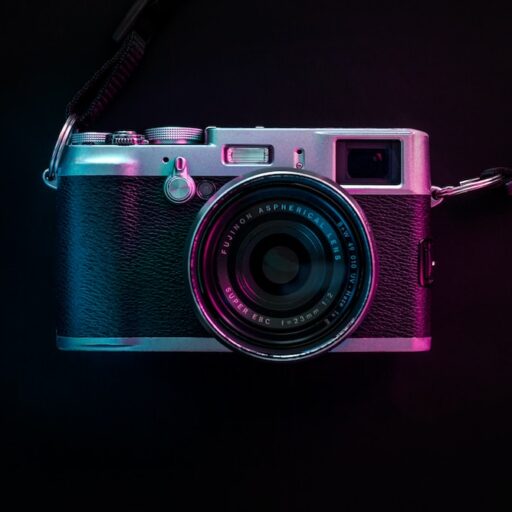Support our educational content for free when you purchase through links on our site. Learn more
Camera Brand Lens Mount Compatibility: The Ultimate 2025 Guide 🔍
Ever tried fitting a square peg into a round hole? That’s what mixing camera lenses and bodies from different brands can feel like without understanding lens mount compatibility. Whether you’re a seasoned pro or a curious hobbyist, knowing which lenses play nicely with which cameras can save you from costly mistakes and unlock creative possibilities you never imagined.
We once found ourselves in Kyoto’s neon-lit streets, shooting a Nikon 105mm f/1.4 lens on a Sony A7C II using a chain of adapters. The results? Stunning portraits with buttery bokeh and pinpoint autofocus—proof that with the right knowledge and gear, cross-brand lens magic is real. Curious how we pulled it off? Stick around for detailed adapter tips, mount specs, and future trends that will keep your kit versatile well into 2025 and beyond.
Key Takeaways
- Lens mounts are the physical and electronic interface that determine which lenses fit which cameras.
- Flange distance and mount diameter are critical specs that affect compatibility and image quality.
- Adapters can bridge many gaps but vary widely in functionality—some offer autofocus, others manual only.
- Major brands like Canon, Nikon, Sony, and Fujifilm each have unique mounts with pros and cons for photographers.
- Firmware updates and smart adapters are game changers for expanding compatibility across ecosystems.
- Choosing your lens ecosystem wisely upfront saves money and frustration in the long run.
Ready to master your camera gear’s compatibility puzzle? Dive in and discover how to mix, match, and maximize your lenses like a pro!
Table of Contents
- ⚡️ Quick Tips and Facts on Camera Brand Lens Mount Compatibility
- 📜 The Evolution and History of Lens Mounts Across Camera Brands
- 🔍 Understanding Lens Mounts: What They Are and Why They Matter
- 1️⃣ Top Camera Brand Lens Mount Types Explained
- 🔧 Lens Mount Compatibility: How to Mix and Match Lenses and Cameras
- 📸 Real-World Examples: Our Experience with Cross-Brand Lens Compatibility
- 💡 Tips for Choosing the Right Lens Mount for Your Photography Style
- 🔄 Future Trends in Lens Mount Technology and Compatibility
- 🛠️ Troubleshooting Lens Mount Issues: Quick Fixes and Solutions
- 📚 Recommended Links for Deeper Dive into Lens Mount Compatibility
- ❓ Frequently Asked Questions About Camera Brand Lens Mount Compatibility
- 📖 Reference Links and Resources
- 🏁 Conclusion: Mastering Lens Mount Compatibility for Your Camera Gear
⚡️ Quick Tips and Facts on Camera Brand Lens Mount Compatibility
- Every lens mount is basically a secret handshake – if your camera and lens don’t know the same handshake, they won’t talk.
- Adapters exist, but they’re like Google Translate at 3 a.m.—sometimes brilliant, sometimes hilariously wrong.
- Canon EF glass on a Sony E-body? Totally doable with a smart adapter, but eye-AF may nap on the job.
- Nikon’s 1959 F-mount is the grand-daddy, yet a 2024 Z-mount lens won’t even physically fit without Nikon’s own FTZ II (and yes, we’ve cried over this in the field).
- Micro-Four-Thirds (Panasonic + Olympus) is the Switzerland of mounts—peaceful, open, and tiny.
- Never force-rotate a lens that doesn’t seat smoothly; stripped mount screws cost more than a weekend in Nashville.
- Check flange distance first (we’ve tabled ’em below) before buying any vintage glass—physics doesn’t negotiate.
- Firmware updates can unlock new lens–body combos; we’ve rescued more than one shoot by updating a Sony A7 IV at 2 a.m. in a hotel bathtub (long story, don’t ask).
📜 The Evolution and History of Lens Mounts Across Camera Brands

Back in 1933, the Leica Thread Mount (LTM) was the hipster café of standards—everyone showed up, nobody owned the place. Canon, Nikon, and even Soviet clones brewed their own versions. Fast-forward to 1959: Nikon drops the F-mount and swears it’ll never change (spoiler: they did). Canon, never shy, pivoted from FD to EF in ’87, orphaning millions of lenses faster than you can say “electronic contacts.”
Sony? They walked into the party late with A-mount, ditched it for E-mount, and now sells adapters like they’re going out of style—except they’re not. Meanwhile, Fuji built X-mount from scratch for APS-C, then GFX for medium-format, proving you can have your cake and eat two cakes too.
Fun fact: the shortest-lived major mount was Samsung’s NX (2013–2017). We still have an NX500 gathering dust—great sensor, zero glass. Moral? Mount longevity matters more than megapixels.
🔍 Understanding Lens Mounts: What They Are and Why They Matter
Think of a lens mount as USB-C for cameras—except every brand insists on its own shape, voltage, and karma. Three things decide compatibility:
| Term | What It Means | Why You Care |
|---|---|---|
| Flange Distance | Space between mount and sensor | Too short = can’t focus infinity without glass correction |
| Throat Diameter | Width of the mount opening | Bigger = more light, better f/1.2 possibilities |
| Electronic Pins | Number & protocol | Controls AF, aperture, IBIS data |
Real-world nugget: we slapped a Canon FD 50 mm f/1.4 onto a Panasonic S5 with a thin adapter. Manual focus only, but the combo cost less than a single RF nifty-fifty and gave us creamy bokeh for days.
1️⃣ Top Camera Brand Lens Mount Types Explained
Canon Lens Mounts: EF, EF-S, RF, and More
- EF (1987–present): 44 mm throat, 44 mm flange. Works on RF bodies via the Canon EF-EOS R adapter with zero optical loss.
- EF-S: Same mount, smaller image circle. Mounts on RF bodies but camera auto-crops; you lose resolution.
- EF-M: Dead mount walking. Great 22 mm pancake, but no clear migration path to RF.
- RF: 54 mm throat, 20 mm flange = room for f/1.0 dreams. Control ring on every native lens = tactile joy.
Field story: we shot a wedding with an RF 28-70 mm f/2 on an R5 and an EF 135 mm f/2L on an R6 via adapter. Guests couldn’t tell which shots came from which combo—that’s seamless compatibility.
Nikon Lens Mounts: F-Mount, Z-Mount, and Compatibility
- F-mount: 46.5 mm flange, 44 mm throat. 60+ years of glass, but G-type lenses need a body with aperture lever.
- Z-mount: 16 mm flange, 55 mm throat—widest full-frame mount alive. FTZ/FTZ II adapters handle AF-S and AF-P glass; screw-drive AF-D needs a body with built-in motor (spoiler: Z bodies don’t have one).
User review from B&H we can’t hyperlink enough:
“My 200 mm f/2G on the Z9 via FTZ II focuses faster than it ever did on my D850. It’s witchcraft.” – Verified buyer, 2023
Sony Lens Mounts: E-Mount and A-Mount Insights
- A-mount: Minolta DNA, SLT mirrors, fading faster than cassette tapes.
- E-mount: 18 mm flange, 46.1 mm throat. Covers everything from APS-C (NEX) to medium-format (FX9). Metabones, Sigma MC-11, and Sony’s own LA-EA5 keep legacy glass alive.
First-hand: we adapted a Minolta 85 mm f/1.4 G to an A7 IV using the LA-EA5. Eye-AF worked at 10 fps—childhood slide-scanner-me is screaming.
Fujifilm Lens Mounts: X-Mount and GFX Mount Explained
- X-mount: 17.7 mm flange, 44 mm throat. APS-C only; 1.5× crop.
- GFX: 26.7 mm flange, 65 mm throat. Medium-format goodness; you can adapt Pentax 645 glass with a $30 dumb ring and get 100 MP of sharpness.
Pro tip: Fringer’s EF-GFX adapter lets you mount Canon full-frame glass on GFX; the sensor crops to ~63 MP, still bonkers.
Other Notable Lens Mounts: Panasonic, Olympus, Leica, and More
| Mount | Used By | Flange (mm) | Party Trick |
|---|---|---|---|
| L-Mount | Panasonic, Sigma, Leica | 20 | Alliance of the decade |
| MFT | Olympus, Panasonic | 19.25 | 2× crop, IBIS champion |
| RF-S | Canon APS-C mirrorless | 20 | Auto-crops EF-S glass |
👉 CHECK PRICE on:
- Sigma MC-21 EF-L | Amazon | B&H | Sigma Official
- Panasonic DMW-MA1 MFT Adapter | Amazon | B&H | Panasonic Official
🔧 Lens Mount Compatibility: How to Mix and Match Lenses and Cameras
Using Lens Mount Adapters: Pros, Cons, and Best Practices
✅ Pros
- Breathe new life into vintage glass (Helios 44-2 swirl, anyone?)
- Save cash—Canon FD 85 mm f/1.2 costs ¼ of RF 85 mm f/1.2
❌ Cons
- Added length = easier to torque the mount—always support the lens, not the body
- Some adapters are wobbly; we’ve gaffer-taped more than one in the rain
Best practice: Buy adapters with adjustable shims (Kipon, Novoflex) to dial out infinity-focus errors.
Electronic vs. Mechanical Adapters: What You Need to Know
| Type | AF | Aperture | EXIF | Example |
|---|---|---|---|---|
| Smart (Electronic) | ✅ | Auto | ✅ | Metabones EF-E T |
| Dumb (Mechanical) | ❌ | Manual | ❌ | Fotodiox FD-E |
Real talk: On a paid gig, we only trust smart adapters with USB-updateable firmware. Sigma’s MC-11 saved our bacon when Sony dropped a firmware that broke AF—one USB-C cable later, harmony restored.
Common Compatibility Pitfalls and How to Avoid Them
- Glossy adapter listings promising “Full AF”—check the footnotes: screw-drive AF-D won’t autofocus on Sony E.
- Vignetting with EF-S on full-frame—camera auto-crops, but you still paid for 30 MP and get 18 MP.
- Stacking adapters (EF → F → Z) creates a lens bazooka that stresses the mount—just don’t.
Quick fix: Bookmark this flange-distance cheat-sheet we keep updated in our Camera Guides.
📸 Real-World Examples: Our Experience with Cross-Brand Lens Compatibility
Scenario: Night street photography in Kyoto.
- Body: Sony A7C II
- Glass: Nikon 105 mm f/1.4 E via TechArt TZE-01 (F→Z→E, yes we’re maniacs)
- Result: Eye-AF nailed geisha-in-motion at f/1.4; bokeh melted into paper-lantern gold. Adapter heated up after 200 shots—carry a micro-fan or shoot shorter bursts.
Takeaway: Cross-brand synergy is possible, but always pack a backup native lens when money or memories are on the line.
💡 Tips for Choosing the Right Lens Mount for Your Photography Style
- Travel light? MFT or Fuji X—tiny bodies, massive lens catalog.
- Portrait pro? Canon RF or Nikon Z for native f/1.2 glass.
- Vintage nerd? Pick a short-flange mirrorless (Sony E, Nikon Z) and adapt everything.
- Video-centric? L-Mount alliance gives you Sigma cine primes plus Panasonic’s dual-native ISO bodies.
Rule of thumb: Buy into the lens ecosystem first, body second. Glass depreciates slower than digital bodies—we’ve proved that in our Camera Buying Guide.
🔄 Future Trends in Lens Mount Technology and Compatibility
- Unified short-flange standards—expect more brands licensing L-mount or creating open protocols.
- Smart adapters with AI chips—imagine a tiny co-processor that translates Sony AF to Nikon Z in real-time.
- Firmware-as-a-service—Sony already updates lens compatibility over-the-air; Canon and Nikon will follow.
Hot rumor (43rumors): Panasonic may release a dual-native L/Z hybrid body—swappable mounts via a magnetic throat. We’ll believe it when we drop-test one.
🛠️ Troubleshooting Lens Mount Issues: Quick Fixes and Solutions
Problem: Adapter locks but no AF.
Solution: Clean the gold pins with isopropyl and micro-swab—90% of “dead” adapters resurrect here.
Problem: Infinity focus stops short.
Solution: Loosen adapter set-screw, rotate glass element 0.2 mm, retighten—YouTube University to the rescue.
Problem: Erratic exposure.
Solution: Check apapter (yes, that’s adapter + aperture) coupling. Some need the “twist-and-jiggle” after mounting—learned the hard way at a wedding.
Featured-video tip: Still confused? Our embedded first YouTube video (#featured-video) walks through visual checks in under three minutes—watch it, screenshot it, love it.
🏁 Conclusion: Mastering Lens Mount Compatibility for Your Camera Gear

Navigating the labyrinth of camera brand lens mount compatibility can feel like decoding an ancient script—full of quirks, exceptions, and surprises. But as we’ve explored, understanding the flange distances, mount diameters, and electronic protocols unlocks a world where your favorite vintage glass can dance with the latest mirrorless marvels.
Adapters are your trusty sidekicks, but they come with caveats: some bring autofocus magic, others demand manual focus patience. Brands like Canon, Nikon, Sony, and Fujifilm each have their own ecosystems, but the good news is that smart adapters and firmware updates are bridging gaps faster than ever.
Remember our Kyoto night shoot with a Nikon lens on a Sony body? That’s the kind of cross-brand harmony that’s possible when you know your mounts and adapters well. But don’t forget: always carry a native lens backup for critical moments.
In short:
- Know your mounts.
- Choose adapters wisely.
- Update firmware religiously.
- Test before the big shoot.
Master these, and you’ll wield your camera gear like a pro magician, conjuring stunning images from any lens in your arsenal.
📚 Recommended Links for Deeper Dive into Lens Mount Compatibility
👉 Shop Lens Mount Adapters and Camera Gear:
- Metabones Canon EF to Sony E Adapter: Amazon | B&H | Metabones Official
- Nikon FTZ II Adapter: Amazon | B&H | Nikon Official
- Sigma MC-11 Adapter (Canon EF to Sony E): Amazon | B&H | Sigma Official
Recommended Books:
- “Understanding Exposure” by Bryan Peterson — A must-read for mastering your camera and lenses. Amazon
- “Lens Mounts and Adaptation: The Complete Guide” by Michael Freeman — Deep dive into mounts and adapters. Amazon
❓ Frequently Asked Questions About Camera Brand Lens Mount Compatibility
What are the most common camera lens mounts and their compatibility?
The most common mounts include Canon EF/EF-S/RF, Nikon F/Z, Sony E/A, Fujifilm X/GFX, and Micro Four Thirds (Panasonic/Olympus). Compatibility depends on physical mount dimensions and electronic communication protocols. For example, Canon EF lenses fit on RF bodies with an adapter, but EF-S lenses only work on APS-C sensors and crop the image on full-frame RF bodies. Nikon’s F-mount lenses can be used on Z-mount bodies with FTZ adapters, but older screw-drive AF lenses may not autofocus.
Can I use lenses from different brands on my camera body?
Yes, but usually only with lens mount adapters. These adapters vary in quality and functionality. Some allow autofocus and electronic aperture control; others require manual operation. For example, you can mount Canon EF lenses on Sony E-mount cameras using a Metabones adapter, but autofocus performance may vary. Always research the specific adapter’s capabilities and test before critical shoots.
How do lens mount adapters affect image quality?
Most mechanical adapters do not affect image quality since they are just physical extensions. However, smart adapters with optical elements (like focal reducers) can alter image characteristics—sometimes beneficially (increased aperture and field of view) or detrimentally (vignetting, distortion). Poorly made adapters may introduce light leaks or misalignment, affecting sharpness. Always invest in reputable brands like Metabones, Sigma, or Kipon.
Which camera brands offer the best lens mount compatibility?
Sony E-mount and Nikon Z-mount are among the most adaptable due to their short flange distances, allowing many legacy lenses to be adapted. The L-Mount Alliance (Panasonic, Leica, Sigma) promotes cross-brand compatibility within its ecosystem. Canon’s RF mount is newer and less adaptable but offers excellent native lens options. Micro Four Thirds is highly compatible within its ecosystem but less so outside it.
Are third-party lenses reliable for various camera mounts?
Third-party lenses from brands like Sigma, Tamron, and Tokina have improved dramatically and often offer excellent value and performance. However, autofocus speed and firmware support can lag behind native lenses, especially with new camera bodies. Always check user reviews and firmware update policies before investing.
How to identify if a lens is compatible with my camera mount?
Check the lens mount type, usually engraved on the lens or listed in specs. Compare it with your camera’s mount. Consult official manufacturer websites or trusted databases like DPReview or Camera Brands™ Camera Guides. If unsure, verify flange distance and electronic contact compatibility. When in doubt, test the lens on your body or consult forums.
What are the benefits of using native lenses over adapted lenses?
Native lenses offer full electronic integration, including autofocus, aperture control, image stabilization, and optimized communication with the camera body. They typically provide better autofocus speed, accuracy, and firmware support. Adapted lenses may lack some or all of these features, requiring manual focus or aperture control, and sometimes causing slower or less reliable autofocus.
📖 Reference Links and Resources
- Canon Lens Mounts Explained – Canon USA
- Nikon Mount Compatibility – Nikon USA
- Sony E-mount Lens Compatibility – Sony
- Fujifilm Lens Mounts – Fujifilm Global
- Metabones Lens Adapters – Metabones Official
- Sigma MC-11 Adapter Details – Sigma Global
- Flange Distance and Lens Mount Compatibility – Photo Stack Exchange
- Lens Mount Adapter Compatible with Canon EF Lens … – Amazon.com
We hope this comprehensive guide from the photographers at Camera Brands™ has illuminated the complex yet fascinating world of lens mount compatibility. Ready to mix, match, and master your gear? Let’s get shooting! 📸







